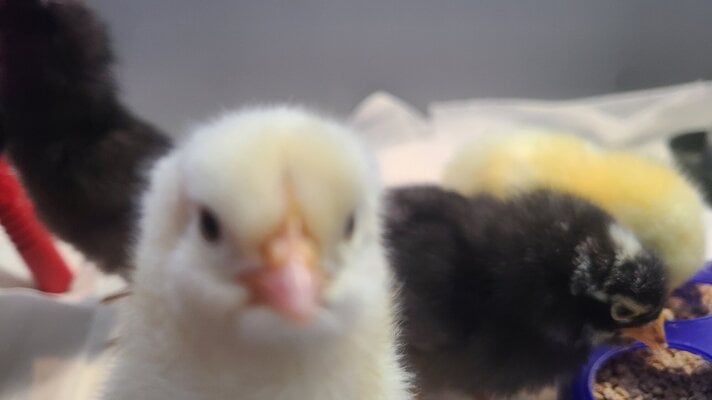sakerobot
Chirping
On January 10th, our rooster Arthur gave his life protecting his flock from a hawk. He was about 9 months old and had been fantastic to all of his 15 ladies, always calling them for food, maintaining discipline, calling out danger and using himself as the shield, he never attacked people basically everything was prefect. (We have since then covered the entire chicken yard with poultry wire.)
After it happened, we decided to try incubating all of the eggs that were fertilised by him. We got a Nurture Right 360 and loaded it with 16 eggs, 15 of which were fertile, and 9 of which made it into day 18. Today is day 20 and just an hour ago, 3 of the eggs have started to crack.
We also kept collecting more eggs after he passed, and we put 11 of those into a second incubator, of which 6 were fertile and going on day 9. Their hatch date will be February 13th.
We're hoping to get at least one rooster, or hopefully 2 or 3 for making a larger flock. If they take on after him, we will be very happy.
He was a Delaware from a great local breeder, we got him to join our hens when he was about 16 weeks and our pullets were a week younger.
The potential mothers are: 6 BRs (2 years), 2 Buff Orpingtons (2 years), and last year's pullets are 2 silver and 1 blue laced Wyandottes, a lavender Orpington, Dark Brahma, Bielefelder, and a Speckled Sussex although we think she's unlikely as we've never witnessed him even trying to mate her probably due to her smaller size (as would be expected of a true gentleman).
One notable mother is a Buff Orpington named Tsunade - last year she was snatched by a raccoon that was crawling up a pine tree with her until I yelled profanities and the raccoon fell and dropped her. She had lost a lot of feathers, but did not suffer any critical wounds, just some bruises. Eventually she made a full recovery and has been one of the most frequent layers this winter. (She also once almost died from a comb injury, or at least it would not have turned out well but luckily I witnessed it and was able to bring her inside for treatment right away.) She has at least two or three eggs that are currently incubating, one in the first incubator and two in the second. We didn't keep track of the "kitchen egg" batch, so aside from the 1 Tsunade egg, we don't know who the mothers are.
I'll update this thread with additional developments.


After it happened, we decided to try incubating all of the eggs that were fertilised by him. We got a Nurture Right 360 and loaded it with 16 eggs, 15 of which were fertile, and 9 of which made it into day 18. Today is day 20 and just an hour ago, 3 of the eggs have started to crack.
We also kept collecting more eggs after he passed, and we put 11 of those into a second incubator, of which 6 were fertile and going on day 9. Their hatch date will be February 13th.
We're hoping to get at least one rooster, or hopefully 2 or 3 for making a larger flock. If they take on after him, we will be very happy.
He was a Delaware from a great local breeder, we got him to join our hens when he was about 16 weeks and our pullets were a week younger.
The potential mothers are: 6 BRs (2 years), 2 Buff Orpingtons (2 years), and last year's pullets are 2 silver and 1 blue laced Wyandottes, a lavender Orpington, Dark Brahma, Bielefelder, and a Speckled Sussex although we think she's unlikely as we've never witnessed him even trying to mate her probably due to her smaller size (as would be expected of a true gentleman).
One notable mother is a Buff Orpington named Tsunade - last year she was snatched by a raccoon that was crawling up a pine tree with her until I yelled profanities and the raccoon fell and dropped her. She had lost a lot of feathers, but did not suffer any critical wounds, just some bruises. Eventually she made a full recovery and has been one of the most frequent layers this winter. (She also once almost died from a comb injury, or at least it would not have turned out well but luckily I witnessed it and was able to bring her inside for treatment right away.) She has at least two or three eggs that are currently incubating, one in the first incubator and two in the second. We didn't keep track of the "kitchen egg" batch, so aside from the 1 Tsunade egg, we don't know who the mothers are.
I'll update this thread with additional developments.












 Cameras definitely help figure things out! If those are the only possible mothers for the later batch, it should be possible to sex the black ones the same way as Barred Rock chicks, if you're confident no Lavender Orpington eggs could be involved.
Cameras definitely help figure things out! If those are the only possible mothers for the later batch, it should be possible to sex the black ones the same way as Barred Rock chicks, if you're confident no Lavender Orpington eggs could be involved.